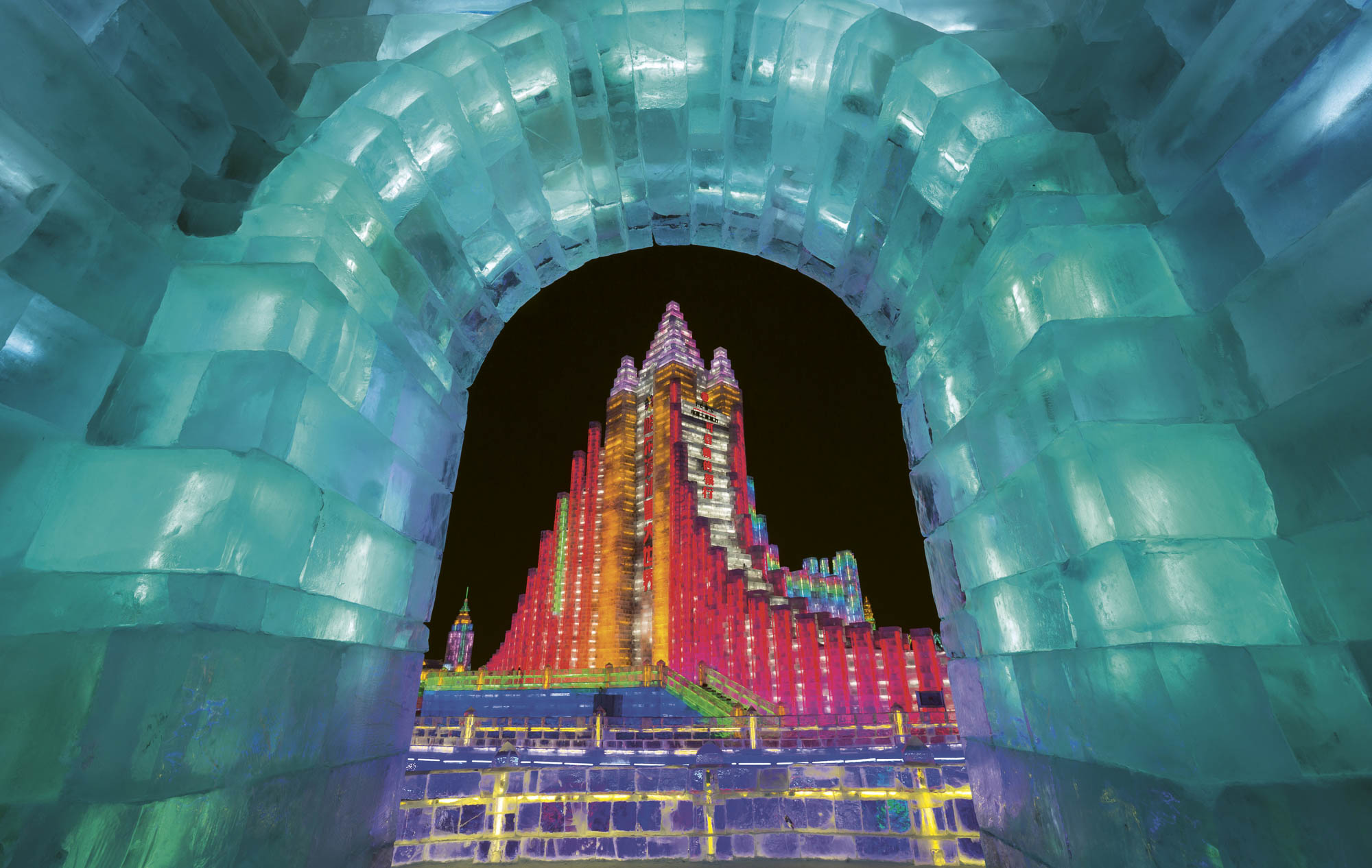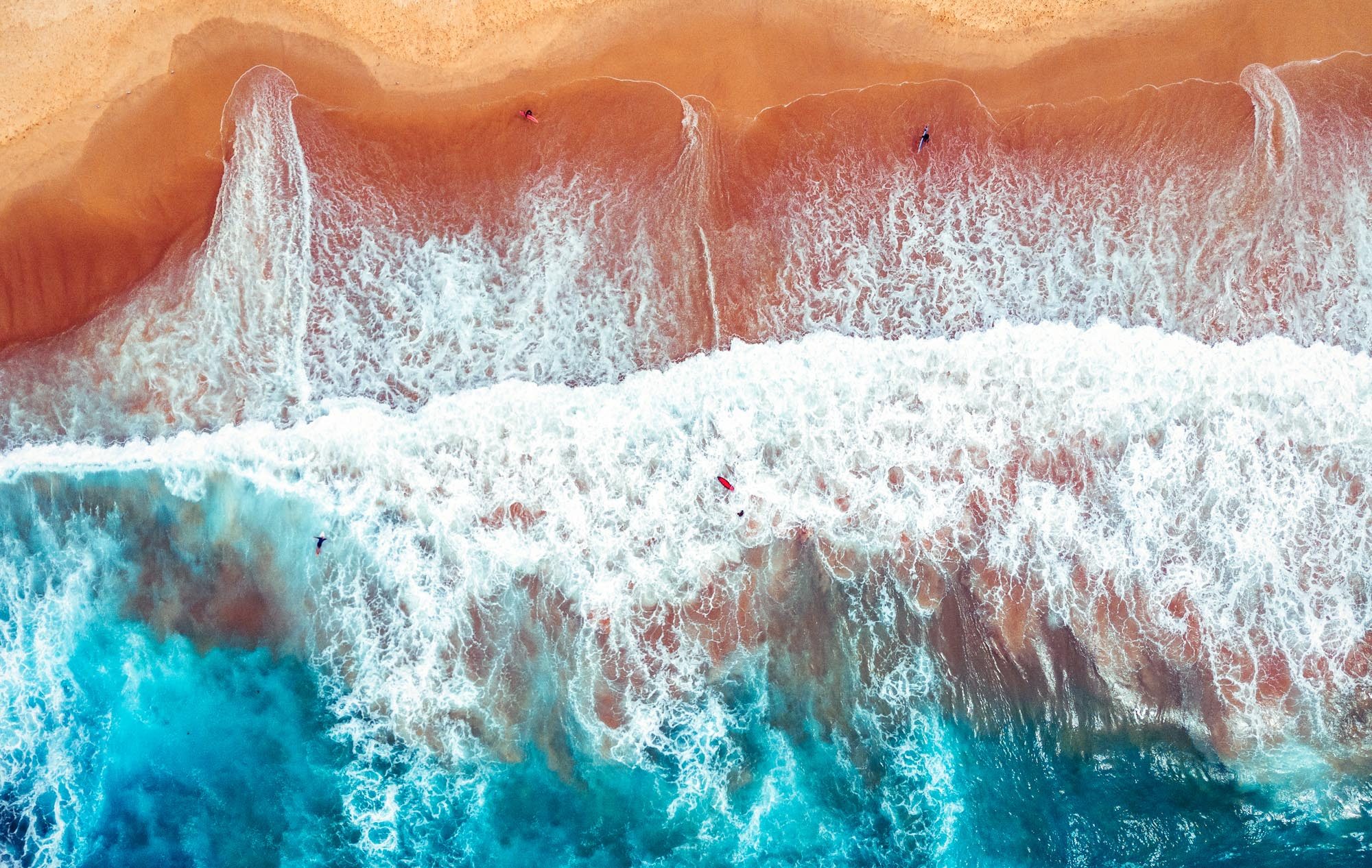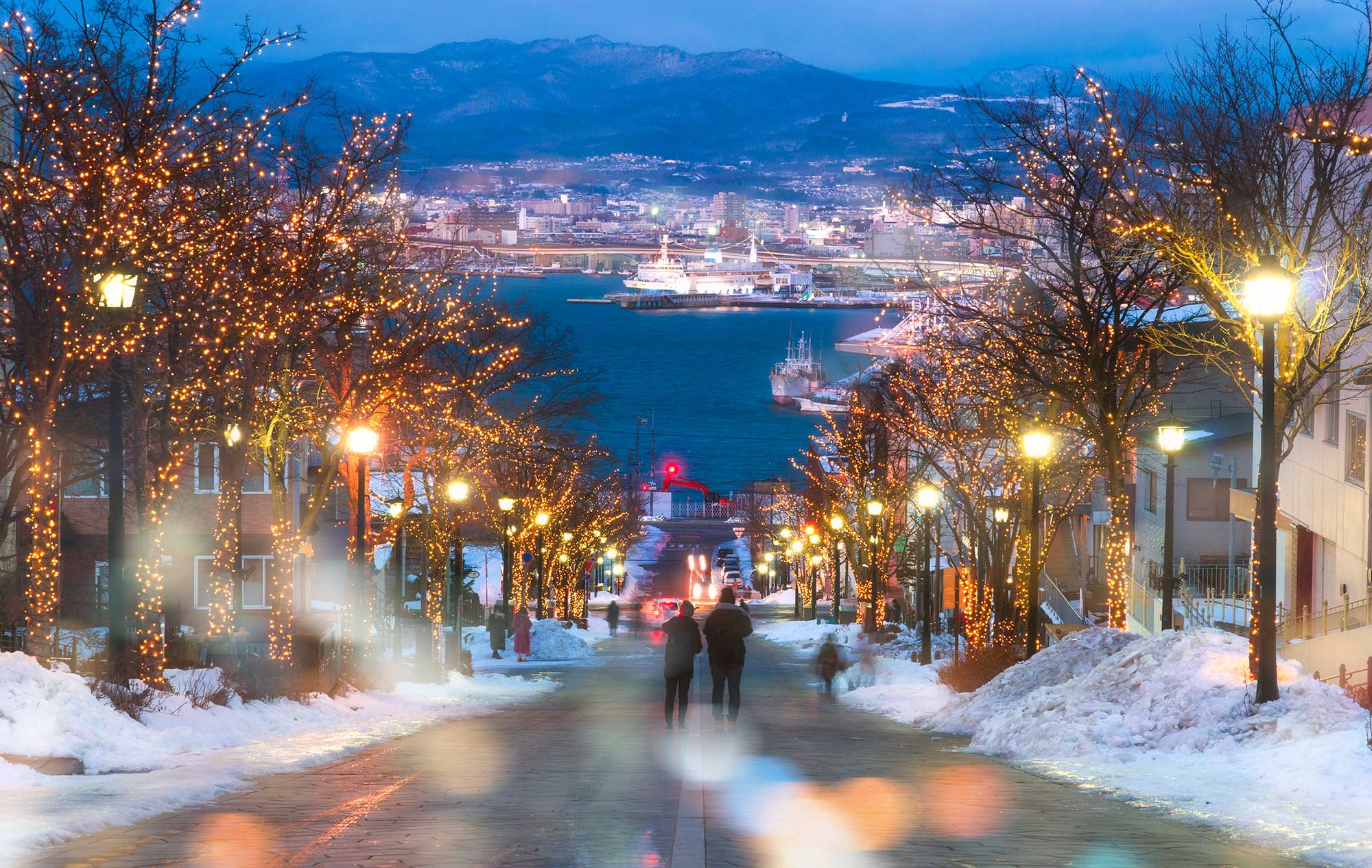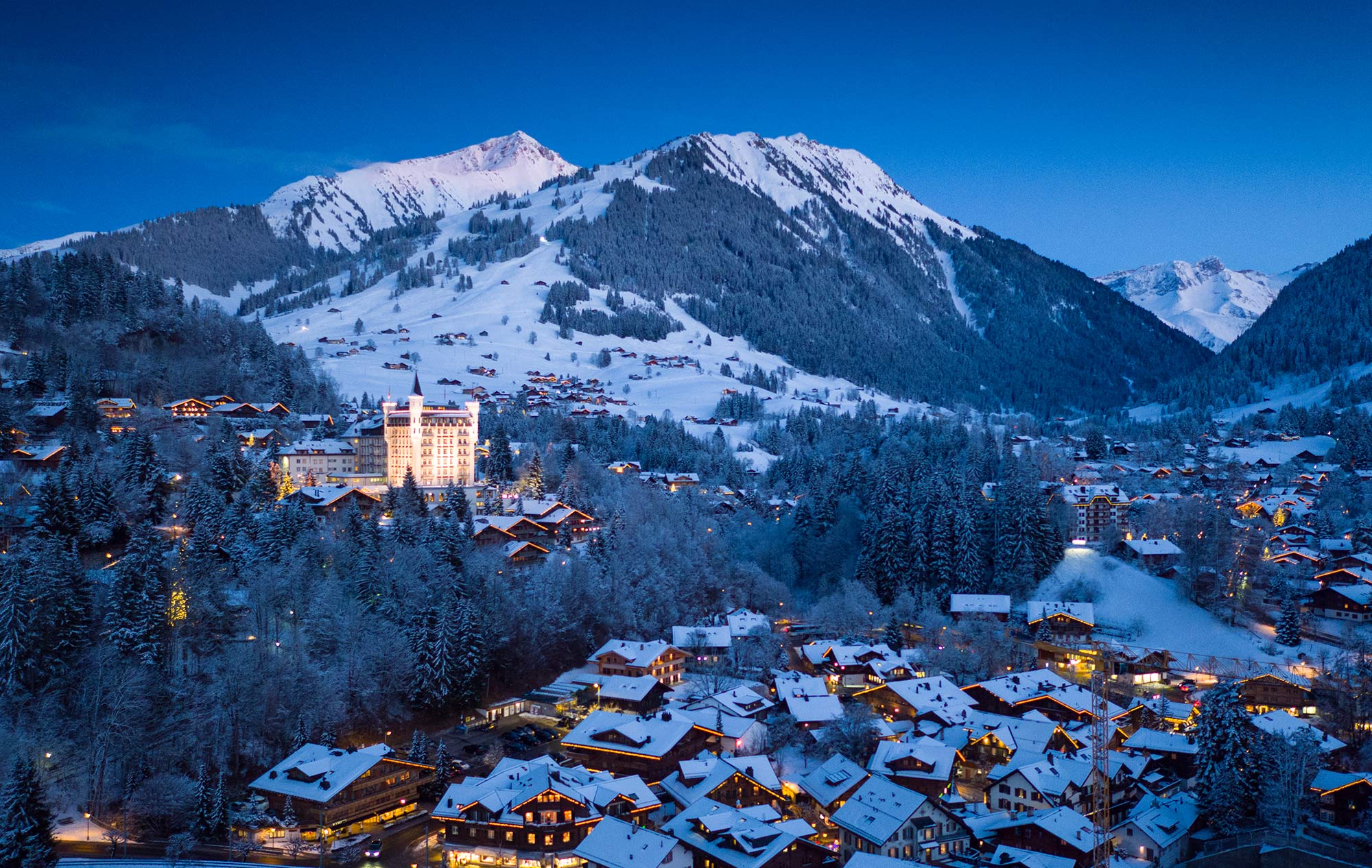It’s no exaggeration to say that Harbin, in the far northern province of Heilongjiang, is China’s winter wonderland. Every December, a Disney-sized theme park of fairy-tale castles, pagodas, slides and rides carved out of ice materialises on a patch of ground just north of the frozen Songhua River. As the mercury plummets to 20 below, visitors descend in fur-clad droves to the Harbin Ice and Snow World, the largest display of ice architecture in the world.
It’s just a single, chilly component of a city-wide winter festival that dates back to the 1960s, when Harbin locals first displayed their carved ice lanterns in Zhaolin Park in the city’s historic centre. Since then the festival has grown to include the Ice and Snow World, a staggeringly ambitious snow sculpture expo, sports competitions including skiing, ice fishing and ice hockey, and hundreds of neon-clad ice sculptures plonked all over the city.
It all sounds like heaps of frosty fun – which might make someone question the timing of my visit: I am in Harbin in late summer. There are a few ice sculptures dotted about but, on closer examination, they’re made of plastic, presumably to appease tourists like me who’ve arrived in the low season.
But actually, despite the balmy temperatures and folks downing mugs of Harbin beer in tents beside Stalin Park, I’ve had a tip-off that elsewhere in the city, I can find what Harbin is most famous for. Snow and ice, a magical land where it’s forever winter, with ice castles, slides, slopes and wintry fun. A Chinese Narnia without the talking animals, if I can just find which wardrobe to walk through.
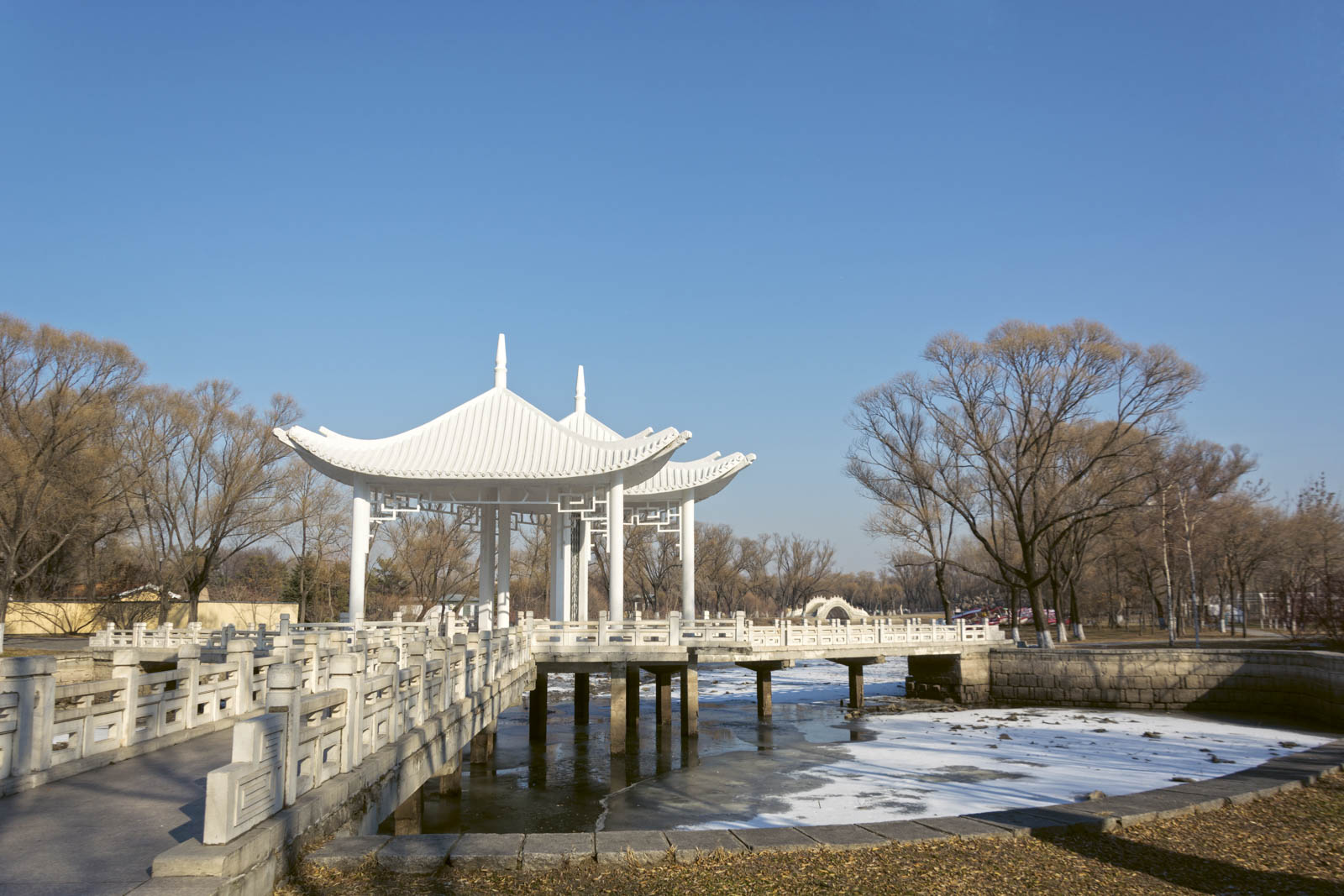
The number 47 bus has deposited me in Harbin’s Songbei District, a hypermodern development of high-rise apartments and offices about 15 kilometres outside the centre, and I’m gazing awestruck at the newly opened Harbin Wanda City, a theme park and entertainment complex kitted out with rollercoasters, cinemas, hotels and a very icy secret at its heart: the wardrobe. Which, incidentally, looks like a bright red grand piano, hundreds of metres of long.
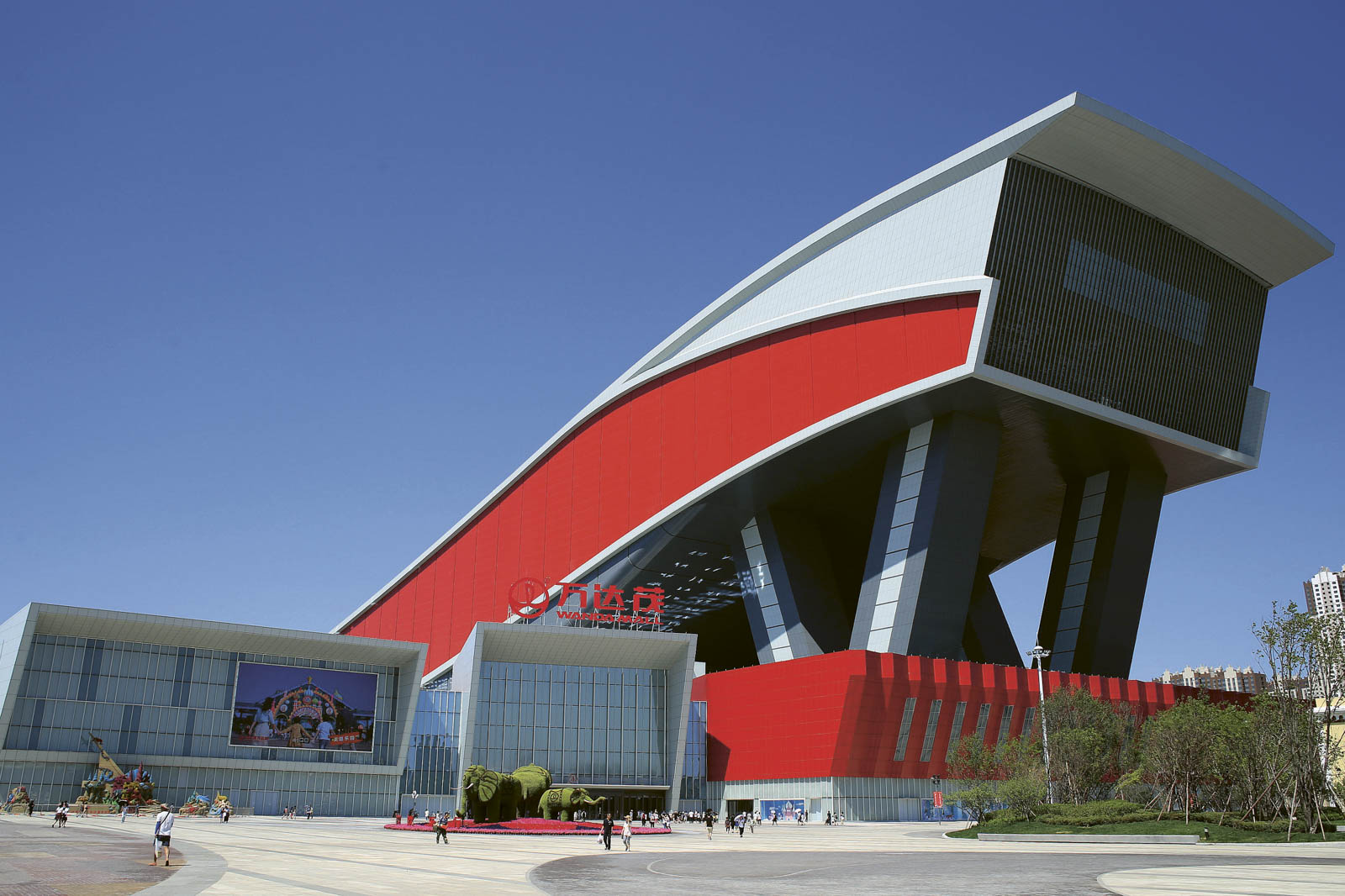
Inside, my shorts and shoes are exchanged for salopettes and skis, and I step into one of China’s most surreal sights: an indoor mountain, blanketed in real snow and dotted with pine trees, with two twin chairlifts rising into the frosty mist, hundreds of skiers swooshing down pistes, and, yes, a fairy-tale castle made out of ice.

Harbin Wanda City isn’t the first indoor ski resort in the world – they have them in Germany and the Netherlands, and there’s even one in the baking deserts around Dubai. But according to general manager Yi Li, this one is probably the biggest.
‘We can handle 3,000 skiers at a time,’ Yi proudly says, as we ride up one of the chair lifts together. Yi has worked as a ski instructor in Switzerland and in China’s popular Chongli resort cluster outside Beijing, which will host the winter Olympics in 2022. He joined Wanda in 2015.
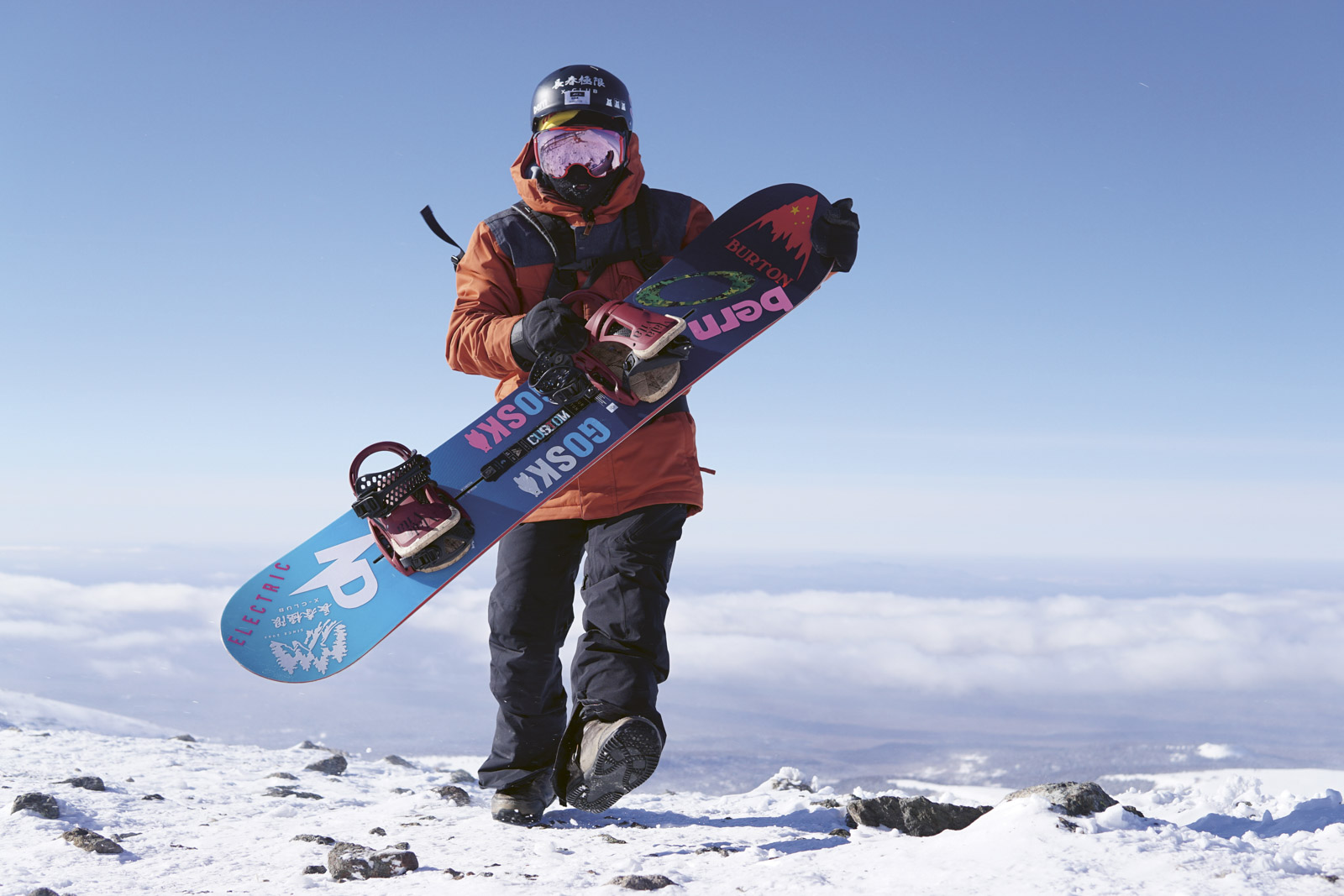
Simply riding the lift is another pinch-me moment: we dangle high above the snow, gazing at alpine mountains painted on the enormous hangar walls, our breath condensing to dragon smoke as we chat. I ask Yi how cold it is. ‘Minus two right now,’ he says, ‘but -5 when we’re making new snow.’ It might seem weird to build this kind of facility in a place that already has an outdoor ski resort (Yabuli, about an hour south of Harbin), but, as Yi explains, the indoor resort will capitalise on the already flourishing interest in winter sports by extending it year-round. Plus, with temperatures as low as -30 in winter, having the option of skiing inside at -2 sounds positively tropical by comparison.
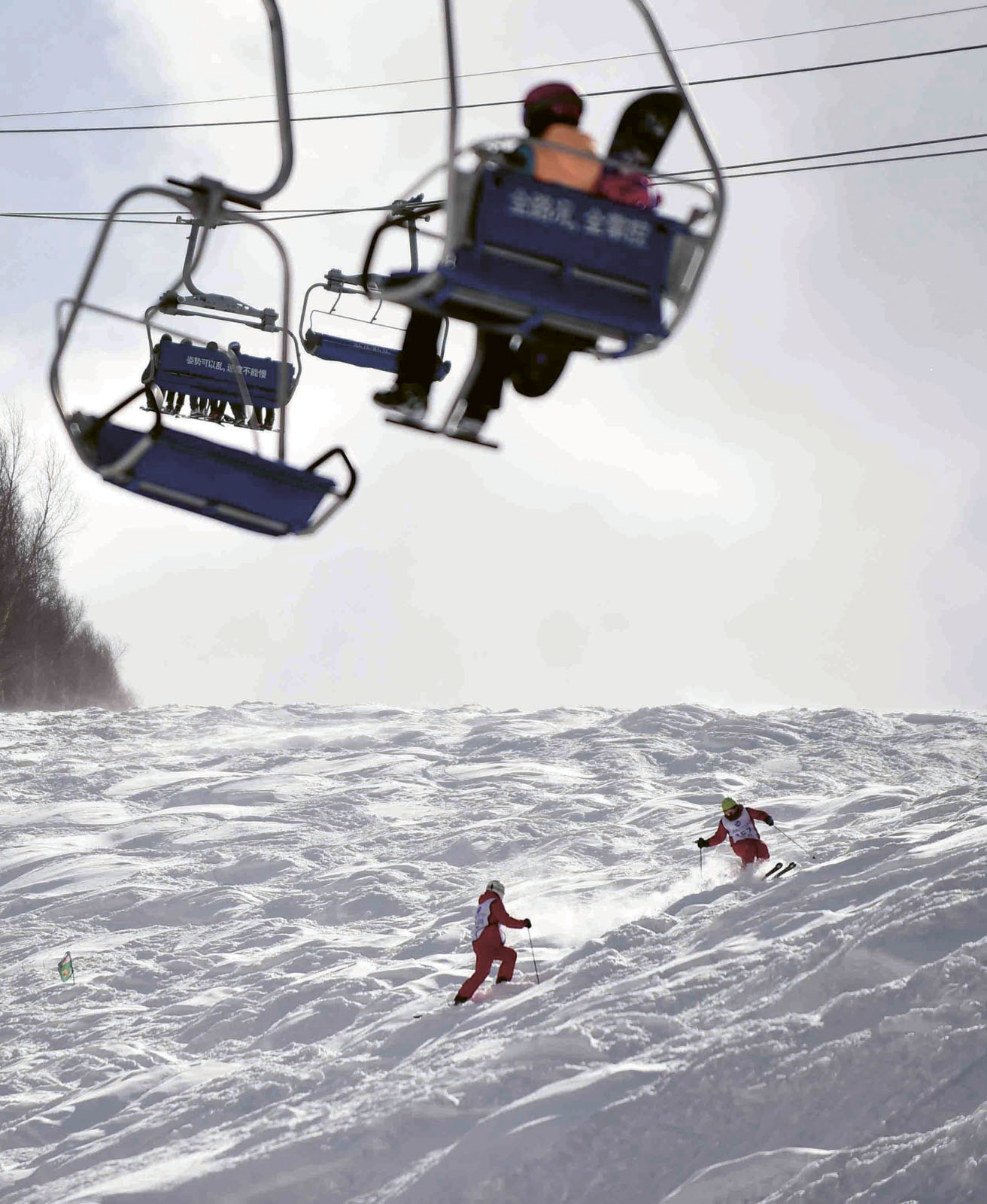
‘This is our longest slope at 500 metres – good for ski training,’ says Yi as we stand at the top, ready to schuss off. Ski training is clearly something I’m in need of, but despite being a little rusty I get down in one piece. In fact, pro ski teams from South Korea, Russia and Japan have already come here for summer training. At the other end of the spectrum, it’s geared up for beginners too, with five slopes and five tiers of ski school.
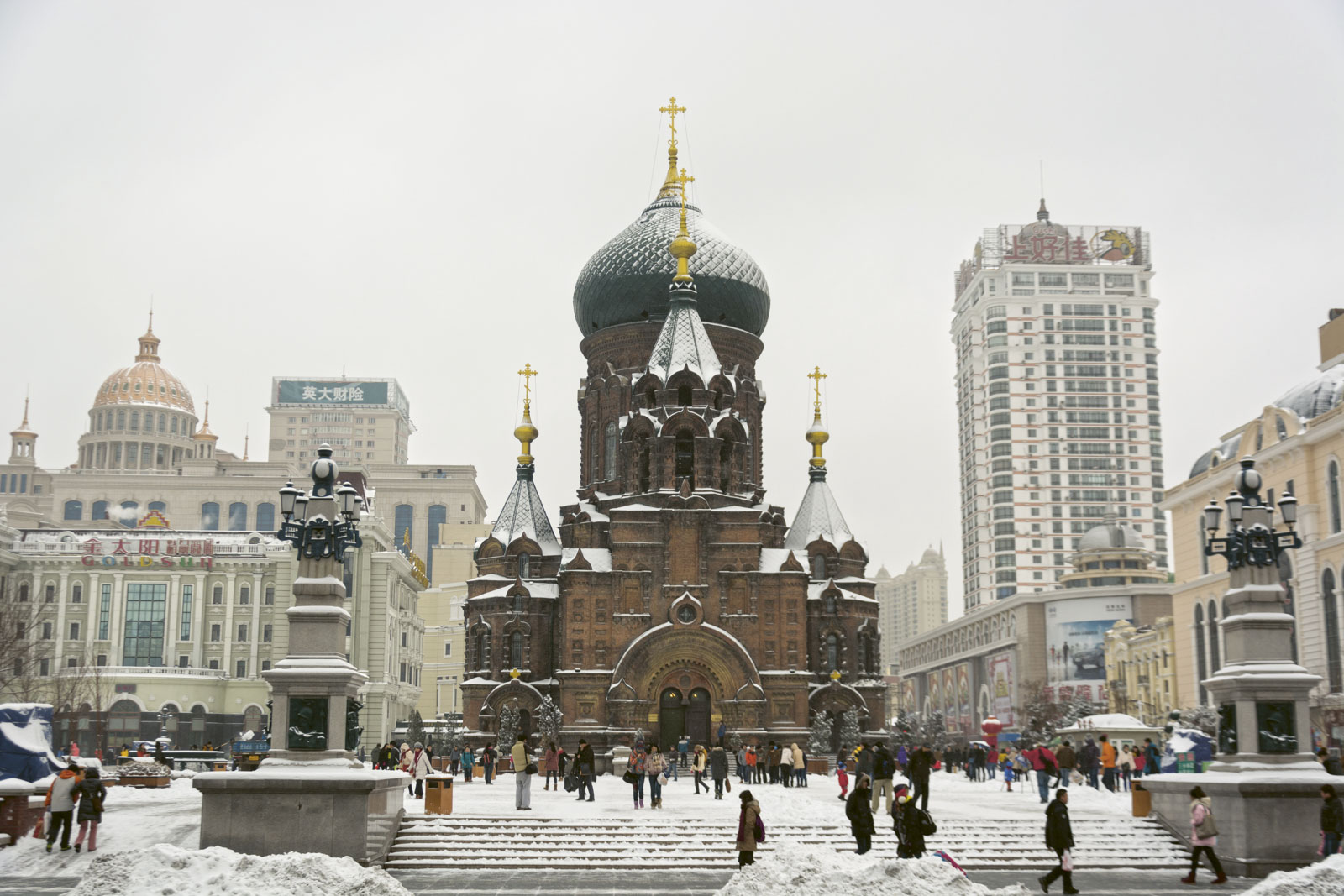
And it’s not just skiers, either. There’s plenty of high-octane boarding action (or ‘riding’, as I’m corrected) thanks to Italian Andrea Coatti, founder of Yibu Parks, a company that won the contract to build an extreme playground here for freestyle winter sports nuts.
‘At the moment we’ve got nine rail features and a jump, but we’re planning to add more in,’ says Coatti. ‘We’ve already had our first international competition too – the Banana Open – last month. We built two huge scaffold jumps, invited top riders from around the world – it was out of control! The riders were totally surprised when they saw what we’ve got.’ In the inaugural contest, Canadian rider Antoine Truchon put in the winning run, taking home over US$100,000 in prize money.
This all raises the question: how did a guy from Italy end up building snow parks in China? ‘It’s been over 10 years now and I’m still wondering the same thing,’ says Coatti. ‘I think Yibu Parks has been successful because yi bu in Chinese means “first step” and from the beginning we set out to make graded snow parks that help new people get into the sport. When I first arrived, the parks already here were all pro scale and too big for the majority of riders. The most popular section of our parks is always the easy section.’
All across China now, people are getting into winter sports in a big way, and Chinese state media reports that around 100 new ski areas have been built in the past 10 years. Several are becoming genuinely international in the standard of their offerings, like the slick new resort at Changbaishan (600 kilometres south of Harbin) and the Olympic-scale development at the Chongli cluster of resorts 200 kilometres northwest of Beijing, meaning there’s never been a better time to get into skiing in China.
Which makes it all the more bizarre when I’m back outside in the heat of a Harbin summer once again, all that snow and ice seeming every inch the Narnia illusion. There’s only one thing for it: go and join those folks downing frosty mugs of Harbin beer in Stalin Park. I need to cool off.
WHERE TO SKI IN CHINA

Changbaishan
This purpose-built ski resort in Jilin province has a stunning nature reserve setting, 43 runs and several international resort-style hotels.
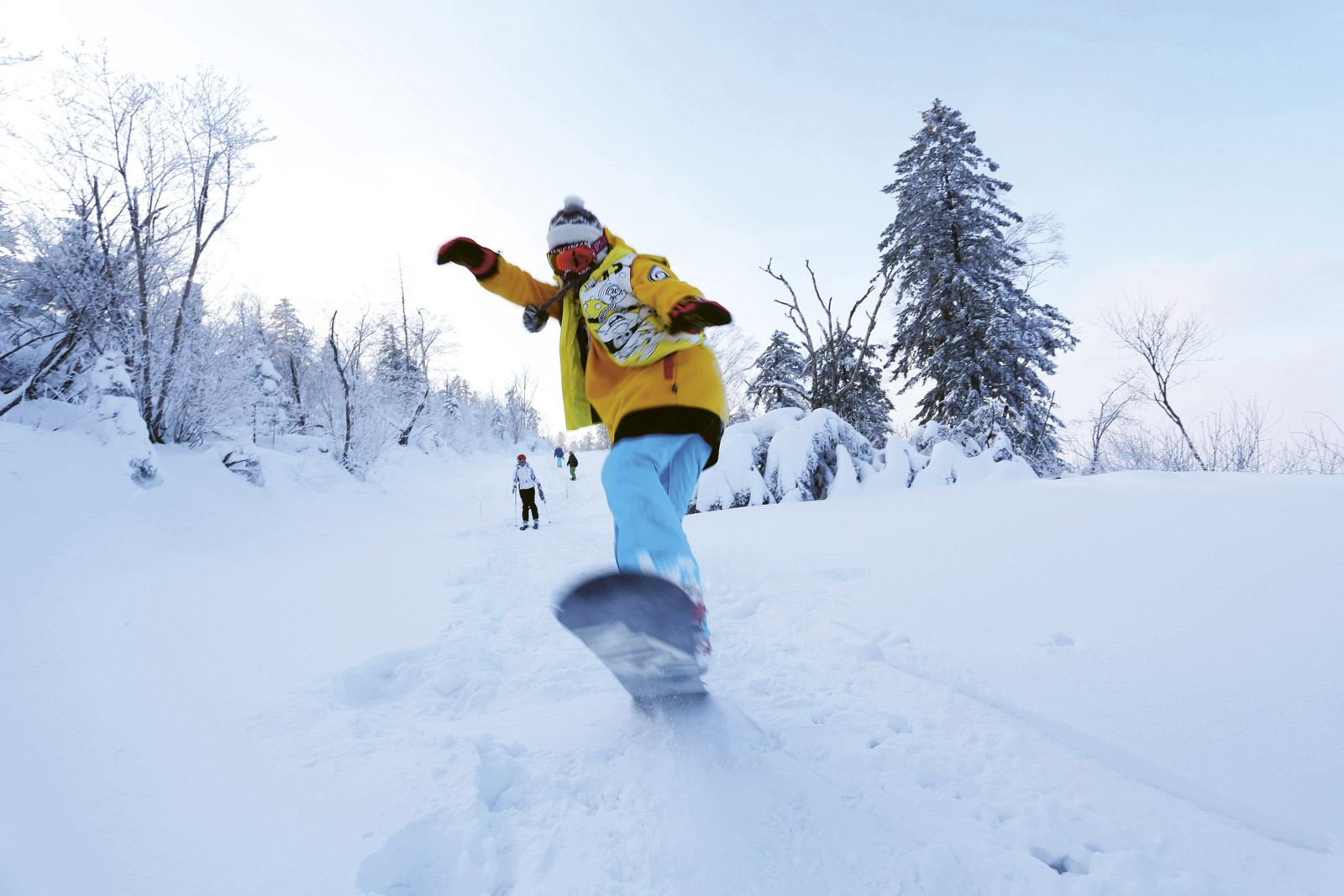
Chongli Resort Cluster
Soon to be connected to the capital by bullet train, this cluster of future Olympic resorts includes Chongli, Wanlong, Secret Garden and Duolemeidi.

Yabuli
Located just outside Harbin, Yabuli is the current downhill training base for the Chinese ski team and has the longest ski jump in China.

Beidahu Ski Resort
This steep ski area in Jilin Province is geared towards intermediate and advanced skiers.
CHINA ICE FESTIVALS
Harbin Ice and Snow World
Late December to early March 2018
China’s premier ice festival boasts epic ice architecture, a performance stage, ice bikes, ice mazes, huge snow slides, a ski hill, fireworks and much more.
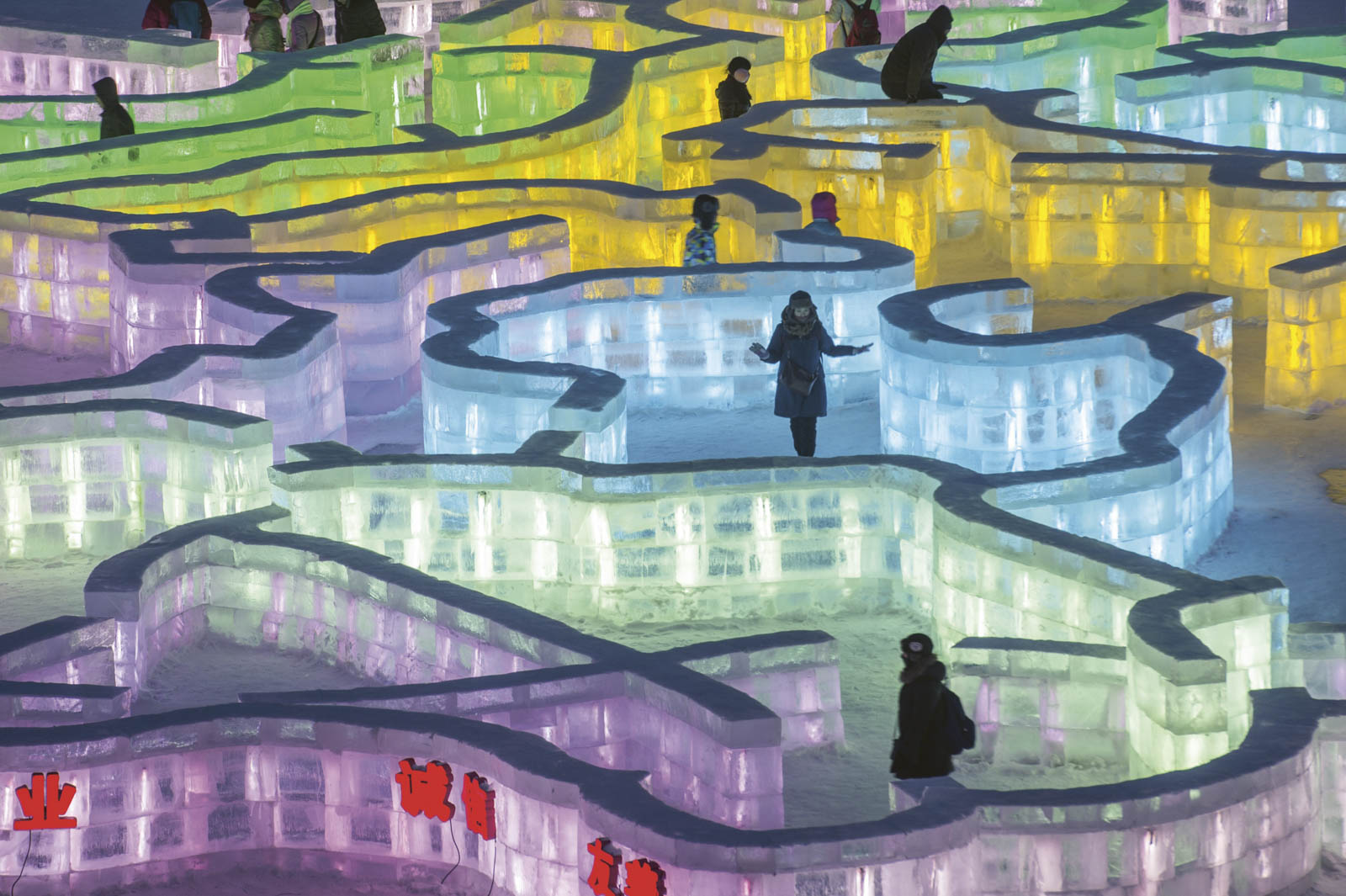
Longqing Gorge Ice and Snow Festival
January to late February 2018
Set 80 kilometres north of Beijing in a stunning scenic river gorge location, this festival features about 400 ice sculptures and plenty of sideshow attractions.
Chagan Lake Ice Fishing Festival
Mid-December 2017 to late January 2018
This winter fixture on Changan Lake in Jilin province welcomes thousands of visitors to watch ice fishing displays and buy a lucky fish for Chinese New Year.




